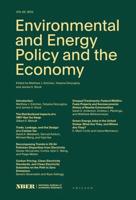Publisher's Synopsis
As a result of effective fire suppression activities over the last 75 years and a reduction in timber harvesting on the national forests, biomass has accumulated increasing the susceptibility of large and more severe wildfires. Reducing accumulated fuels is now a major management objective on the national forests. A combination of traditional silvicultural treatments such as prescribed fire and thinning and new innovations are needed to address the myriad of site conditions. Effective fuels management should improve the health of the watershed ensuring the sustainability of the goods and services that are derived from the landscape. However, since fuels management necessarily interacts with other land management considerations and often requires periodic treatments, assessing the cumulative effects can be daunting. This volume and a companion volume focusing on the Western United States (Elliott and others 2010) were designed to provide land managers with a synthesis of the science to support an assessment of the cumulative effects of fuels treatments on forested watersheds in the conterminous United States. This volume is organized to into three sections, an overview of the biophysiography of the Eastern United States, consideration of ecosystem components and how fuel treatments may affect specific processes or properties, and the third section synthesizes fuels management practices and effects in the major ecosystem types of the region.










